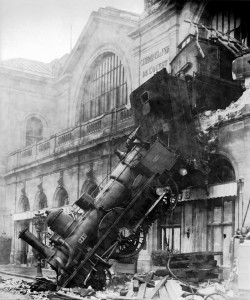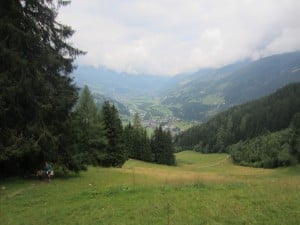I will be speaking next week at Brooklyn Law School at an event about Gerhard Richter organized by the Center for Art Law and the Brooklyn Law School Art Law Association. Entitled “You’ve Been Served: Gerhard Richter Painting (2011), the event on February 3, 2016 at 6:30 will begin with a screening of the documentary Gerhard Richter Painting (2011). After the movie, I will discuss Richter’s prominence in the recent controversy over Germany’s proposed amendment to its cultural heritage protection laws, of which I have been critical and in response to which Richter threatened to remove his painting from his home country.
Nicholas O'Donnell

Recent Posts
Gerhard Richter and German Cultural Heritage Protection Law—Brooklyn Law School February 3, 2016
Topics: cultural property, Events, Gerhard Richter
“Final Report” of Gurlitt Task Force Presented to German Government—Process Continues to Raise More Questions Than Answers
The chair of the Schwabinger Kunstfund (Gurlitt) Task Force (Ingeborg Berggreen-Merkel) presented yesterday a report on behalf of the Task Force to German Minister of Culture Monika Grütters. The larger context of the government’s failure to support the expert panel in the stranger-than-fiction story of Cornelius Gurlitt, however, and the complete lack of a commitment from the national government about what will happen now makes this an occasion that is hardly worth the self-congratulation that accompanied the theatrical presentation. The fact that Grütters would portray the last two years as a “political symbol of transparency” is frankly hard to understand, particularly when the future of the expert panel is completely up in the air. Illusory suggestions that the Deutsches Zentrum Kulturgutverluste will support what’s left of it in some unspecified fashion are hard to place stock in, and it’s anyone’s guess if the members would even want to remain involved.
Topics: Gurlitt Collection, Restitution
Art Finance & Law : Risks, Rules, and Opportunities in Investments in Art, February 12, 2016 in Paris
The Geneva-based Foundation for Art Law (Fondation pour le Droit de l’Art/FDA) is organizing next month the latest in its series of events under the rubric “Art Finance & Law.” The conference is entitled “Art Finance & Law : Risks, Rules, and Opportunities in Investments in Art” (Art Finance & Law : Risques, règles et opportunités dans les investissements en art). It will take place in Paris on February 12, 2016 at AXA Insurance, Hôtel de Vaupalière, 25 Avenue Matignon, from 14:00-18:00, in collaboration with l’Association d’Avocats Conseils d’Enterprises (ACE, or the Assocation of Business Counsel Attorneys).
Topics: Events, Art Finance & Law, Fondation pour le Droit de l'Art
Supreme Court Declines Review of California Resale Royalty Case
The U.S. Supreme Court has declined to hear an appeal of last year’s Ninth Circuit decision striking down part of the California Resale Royalty Act. The law provided royalties to artists on sales after the work leaves the artists’ ownership, on the grounds that artists often fail to enjoy the benefit of an increase in value in their works. Such royalties are more common in Europe, but they are controversial there, too. Opponents argue that it is a deterrent to art trade, and in any event while there is a patchwork of laws, encourages sellers to forum shop to avoid the royalties.
Topics: Legislation, Resale Royalties, Copyright
Naruto, We Hardly Knew Ye—Judge Calls Monkeyshines on "Monkey Selfie" Case
It appears that the much-maligned “monkey selfie” case is destined for a quick exit. The U.S. District Court for the Northern District of California posted a brief order expressing the sentiment of the presiding judge as expressed at a hearing on a defendant’s motion to dismiss. Specifically, the Hon. William H. Orrick made a tentative ruling that the photograph of a crested black macaque cannot be copyrighted on behalf of the animal itself.
Topics: Copyright Act, People for the Ethical Treatment of Animals, monkey selfie, Congress, PETA, David Slater, Copyright, Blurb Inc., Naruto, Hon. William H. Orrick, authorship, Cetacean Community v Bush, Ars Technica
Here We Go Again? Richard Prince Sued By Photographer Over Images of Rastafarian in Instagram Show
A new year, a new Richard Prince appropriation and fair use dispute. Readers will recall both the controversial 2013 Second Circuit decision on Prince’s dispute with Patrick Cariou over the latter’s Yes, Rasta photographs that Prince altered, defaced, and otherwise rearranged for his Canal Zone series. Last year Prince raised the profile of this provocative exploration of the bounds of copyright with the high profile “Instagram” show in which he enlarged Instagram posts and sold them for north of $90,000 each. Prince has now been sued for copyright infringement by photographer Donald Graham, whose image was used in one of those works. Will this be more of the same, or will Prince suffer a reversal of fortune? Even adopting a liberal interpretation of the 2013 opinion, it looks from here like he may have a problem, but the final word will almost certainly not come for quite some time.
Topics: Cariou v. Prince, Richard Prince, Second Circuit, Instagram, Larry Gagosian, Fair Use, Rastafarians Patrick Cariou
Court-Solicited Opinion Reportedly Concludes That Gurlitt Was Competent To Make Will
On the heels of the most recent restitution recommendation, there is more Gurlitt news. In October we discussed news that a Munich court had requested an expert opinion from a psychologist about whether Cornelius Gurlitt was competent to make the 2014 will that named the Kunstmuseum Bern as his sole heir—in particular to the roughly 1,400 works of art in his possession in Munich and Salzburg under suspicion of Nazi looting connections—to the exclusion of his relatives. Procedurally, the court is considering the appeal by Gurlitt's relatives of the denial by a lower court of their will contest.
Topics: Gurlitt case, Gurlitt, Nazi art
Back in September, we voiced curious skepticism about breathless reports of a buried train near Wrocław, formerly Breslau, in Poland. Rumors of this “Nazi gold train” supposedly concealed at the end of World War II and filled with either gold, art, or both, had an odd mixture of plausibility and absurdity. Yet Polish officials went on record confirming…something. On August 28, 2015, Deputy Culture Minister Piotr Zuchowski stated at a press conference that he is “99 percent sure” that the government had located the train allegedly loaded with gold, gems, and perhaps artwork that was buried as the Soviet Red Army encircled Breslau in the last months of World War II. “The train is 100 meters long and is protected,” Zuchowski said.
Topics: Soviet, Breslau, Wrocław, Piotr Koper, Red Army, Nazi Gold Train, Walbrzych, Deputy Culture Minister Piotr Zuchowski, World War II, Poland, Washington Post, Janusz Madej, Andreas Richter, New York Times
Gurlitt Task Force Issues Fifth Recommendation for Restitution
Sophisticated Analysis of Adolph von Menzel Drawing Distinguishes Itself from Recent Revisionism Elsewhere
As the original term of the Gurlitt Task Force (Taskforce Schwabinger Kunstfund) winds down, the panel has issued a report on a work that it deems appropriate for restitution: Interior of a Gothic Church (Inneres einer gottischen Kirche) by Adolph von Menzel (pencil drawing, signed/dated 1874). The drawing has been called Church in Hofgastein in some English language articles.
Topics: Interior of a Gothic Church, Hildebrand Gurlitt, Cornelius Gurlitt, Nazi Germany, Inneres einer gottischen Kirche, Dresden, Gurlitt Task Force, Adolph von Menzel, Nazi-looted art, Gurlitt Collection, Ernst Julius Wolffson, Washington Principles on Nazi-Looted Art, Advisory Commission, Munich, Albert Martin Wolffson, Salzburg, Restitution, Catrin Lorch, Bavaria, World War II, Switzerland, Süddeutsche Zeitung, Austria, Kunstmuseum Bern, Federal Republic of Germany, Raubkunst, Taskforce Schwabinger Kunstfund, Elsa Helene Cohen, Limbach Commission, Jörg Häntzschel
PETA and Opponents Sling Arguments In “Monkey Selfie” Copyright Case
We reported in September on the lawsuit filed in California over the so-called “Monkey selfie” that underscored some of the limits of copyright protection. One of the defendants, Blurb, Inc., the publisher of photographer David Slater’s picture, has moved to dismiss, and People for the Ethical Treatment of Animals has responded. The back and forth is, well, something akin to the infamous barrel full of monkeys.
Topics: People for the Ethical Treatment of Animals, Blurb, monkey selfie, Compendium of U.S. Copyright Office Practices, Wildlife Personalities., PETA, David Slater, Copyright, United States Copyright Office







